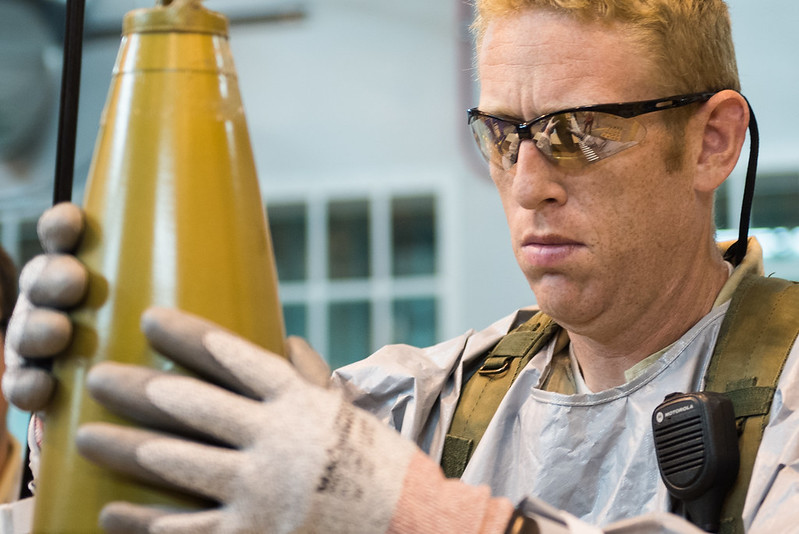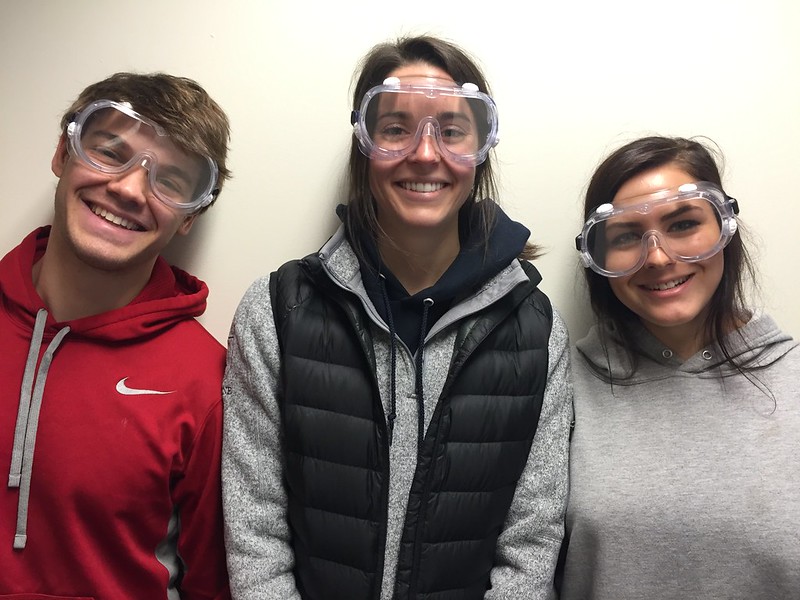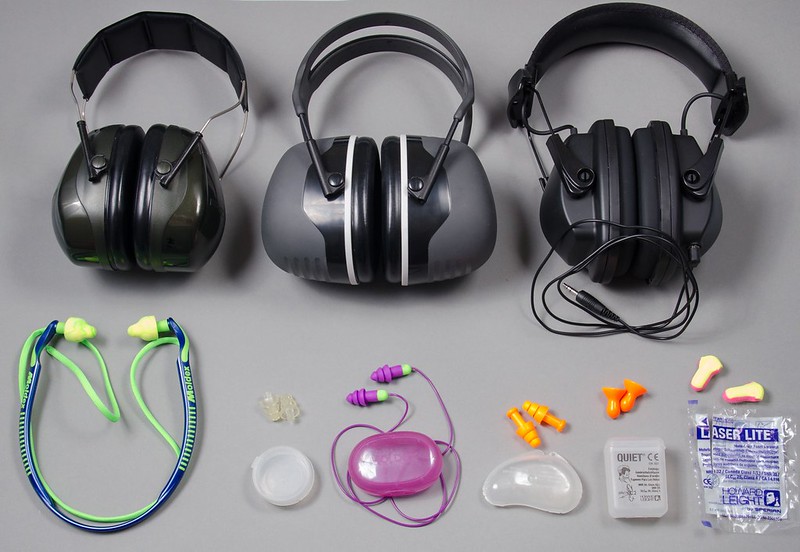With 3D printing making inroads in personal protection equipment (PPE) during the current crisis, what are the long term prospects of 3D printed safety gear? One would expect them to be rather rosy, but we can’t be sure. Safety gear from hearing to eye to foot protection may be a $59 billion market. 3M and a few other companies per niche dominate this market. Most safety equipment is fairly standard and subject to stringent regulations as well.
Many firms see safety gear as being disposable. In a lab environment, disposables may very well make a lot of sense to avoid contamination. Our current high PPE use will invariably bring about a search for more sustainable PPE sources. Recently, a chorus has been rising over PPE waste on beaches and in oceans. It is all rather telegenic and, through our now personal relationship with PPE, is sure to strike a chord. One potential path to more sustainable PPE would be through personalization, giving you a potentially safer PPE item that is also more comfortable. Potentially, we’re talking about 3D Printed Personalized Personal Protective Equipment, 3DPPPPE.

This is not as simple as it may sound. In many cases, proscribed testing or standards make it difficult or impossible to have certified compliance-ready customized PPE. A test may indicate that it needs to be of a certain model or be of a certain size or that a certain number of each batch must be destructively tested. Local laws and individual regulations for different environments from construction sites to nuclear weapon disposal sites or medical labs vary from country to country and industry to industry. So, the PPE market is not holistic in that sense, definitely not for all products.
In some cases however, it is abundantly clear that a more comfortable PPE unit would be worn more and, therefore, be safer in day-to-day use. In Afghanistan and Iraq, helmet comfort was a completely overlooked critical issue. A huge proportion of US casualties were IED related head injuries and deaths resulting from head injuries. Many of these could have been mitigated through better helmets designed to reduce sudden impacts of the brain against the skull. At the same time, avoidable US casualties were caused because soldiers did not wear their helmets due to discomfort. One can immediately see that the U.S. military will be a huge fan of the NHL Helmet challenge and that PPE work could have far reaching significant markets. We would expect form-fitting mass customized PPE to be more comfortable and perhaps safer than traditional PPE. Moreover, custom PPE at the right durability, price and strength would mean that essentially the same product could be sold to the regular eyewear market, motorcycle helmets, hiking boots etc.
If you’re able to make cost-effective safety glasses, you can also make a pair of sunglasses meant for surfers or rodeo clowns. Later on, your rodeo glasses could be sold to the wider public, replete with rodeo clown marketing mush and panache. There are many Carhartts in our future. Especially through mass customized 3D printing, one product could lead to the same digital toolchain being repurposed to other products in a scalable and very cost-effective manner.

Phonak Serenity, hearing protection and coms equipment, does that look printed to you?
“Could”. Could is indeed the operative word here. The above videos by Phonak show you how a pioneer in industrializing 3D printing makes customized 3D printing hearing aid shells. These shells made by Phonak and others mean that, now, the vast majority of the In-The-Ear hearing aid market has been conquered by 3D printed shells. In the videos, you can see how the shell files are digitally positioned, how the prints are made and finished on EnvisionTEC Perfactories with vat polymerization (DLP) and how the finished products are assembled using the shells.

The exact same process could be used to make headphones and the exact same process could be established to make hearing protection. That way, Phonak can leverage its 3D printing expertise and machines to extend its products much more broadly. This seems quite simple and straightforward. But, Phonak already makes hearing aid protection, some of it customized. The company also has Audeo-brand headphones. At this stage, it seems not to regularly offer customization through 3D printing on these other products. So, there is a question of startup, marketing, and extension costs that mean that just because you make millions of hearing aids doesn’t mean that you can just easily switch to headphones or similar equipment.

In hearing protection, the protective solution is remarkably similar to the aid that you get if you don’t wear the protective solution or the thing that causes your hearing loss. It would seem logical that many more hearing aids, headphones, and protective aids will all be sold in tandem. With overlap in materials and parts, but not in certification regimes in some cases, it may be too expensive to make one product in the tougher regulatory manner of another product. In other cases, style or the developing market may require a more dynamic approach than the other market.
With the provisos that, if regulatory bureaus don’t bar customization and if a business can have the organizational design and talent to penetrate very different markets, then mass customized PPE would seem to make a lot of sense. Low-volume feasibility actually would let you make short run, locally adapted and niche safety gear for many markets. You could then repurpose the same production lines for mass customized similar wear. In high-value items, it is clear that we can hit certain cost targets for small components. Anything smaller than a mug is totally doable cost-wise. It would however be difficult to work with different safety regimes and cultures, but not impossible.
Where I think the greatest benefits would lie would be in crossover products. A golden opportunity would be in creating a noise-insulating, noise-canceling wireless headphone that is also a hearing aid, for example. Sales-wise would be complicated but marketing-wise it may be a bridgeable challenge and a disruptive one at that. To “Carhartt”, mass customized safety gear would also be a significant opportunity. I’d trust the gloves that oil service workers wore. I literally asked a Maine roofer once what the best beanie was because he spent a lot of time in the cold on roofs. I figured that what would be good for him would work for me. He told me to get a Carhartt beanie. You’d have to spend millions in marketing to get that kind of authenticity.
Authentic, safe, durable, and tough products that could also fulfill people’s style norms could be a breakthrough crossover product. In low margin applications such as regular impact safety glasses, higher-margin products could be sold of essentially the same product. Couple that with a mass-customized digital and 3D printing toolchain and the result would be a personalized product that could sell in the millions. It would not work for all markets and all firms but selling higher-margin or higher volume products to new markets with existing tooling could really make you much more competitive vis a vis the companies in your current business line. I’m not sure if the rodeo clown safety glasses are the best example, but it would be a fun ride. Giddy up.
Images courtesy of Steve, Willamette Biology. PEO, Liivifriikki.
Subscribe to Our Email Newsletter
Stay up-to-date on all the latest news from the 3D printing industry and receive information and offers from third party vendors.
You May Also Like
Further Understanding of 3D Printing Design at ADDITIV Design World
ADDITIV is back once again! This time, the virtual platform for additive manufacturing will be holding the first-ever edition of ADDITIV Design World on May 23rd from 9:00 AM –...
3D Printer Maker EVO-tech Reborn as NEVO3D — Once More With Feeling
EVO-tech was a 3D printing service and original equipment manufacturer established in 2013 and based in Schörfling am Attersee, Austria. The company produced high-quality material extrusion systems featuring linear bearings,...
3D Systems Brings 3D Printed PEEK Cranial Implant to the U.S. with FDA Clearance
For more than 10 years, 3D Systems (NYSE:DDD) has worked hand-in-hand with surgeons to plan over 150,000 patient-specific cases, and develop more than two million instruments and implants from its...
CDFAM Returns to Berlin for Second Annual Symposium
The second CDFAM Computational Design Symposium is scheduled for May 7-8, 2024, in Berlin, and will convene leading experts in computational design across all scales. Building upon the first event...































